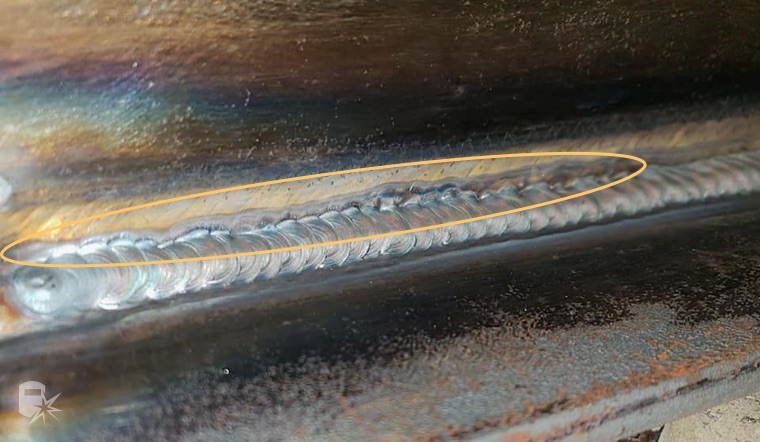Grasping the Art of Welding: Just How to Avoid Undercut Welding Issues for Flawless Manufacture Outcomes
Efficiency and accuracy are extremely important worldwide of welding, where also the slightest blemish can jeopardize the structural integrity of a fabricated item. One typical challenge that welders face is undercutting, a flaw that can lead and damage a weld joint to costly rework. By comprehending the origin of undercut welding and executing efficient techniques to stop it, welders can boost their craft to brand-new degrees of quality (Preventing weld undercut). In the pursuit of flawless fabrication outcomes, understanding the art of welding to prevent undercut issues is not simply a skill however a necessity for those pursuing excellence in their job.
Understanding Undercut Welding

To avoid undercut welding, welders need to guarantee correct welding parameters, such as adjusting the existing, voltage, travel rate, and preserving the proper electrode angle. In addition, using the ideal welding technique for the details joint configuration is vital. Employing weaving movements or backstepping strategies can aid ensure correct weld steel deposition and minimize the probability of undercut development. Routine examination of welds during and after the welding process is additionally critical to catch any type of undercut very early and make necessary changes to avoid additional defects. Preventing weld undercut. By comprehending the sources of undercut welding and implementing safety nets, welders can achieve high-grade, structurally sound welds.
Causes of Undercut in Welding
Comprehending the aspects that add to damage in welding is necessary for welders to generate high-grade, structurally audio welds. When the weld metal does not properly load the groove created in between the base metal and the formerly transferred weld steel, undercutting occurs. Several elements can lead to damage in welding. One typical cause is excessive heat input. Welding at high temperatures for extensive periods can result in the base steel thawing greater than desired, bring about undercut. Poor welding existing or inaccurate welding speed can additionally add to undercut. Insufficient current might not offer adequate heat to melt the base and filler metals adequately, while extreme rate can avoid correct fusion, triggering undercut. In addition, incorrect electrode angles or wrong torch adjustment strategies can create locations of reduced weld steel deposition, promoting undercut. Understanding these causes and implementing correct welding methods can help stop undercutting problems, ensuring solid and long lasting welds.
Strategies to Prevent Undercutting

To minimize the threat of damaging in welding, welders can use tactical welding methods targeted at improving the high quality and honesty of the weld joints. One efficient technique is to change the welding specifications, look at this now such as voltage, present, and travel rate, to make sure correct warmth input and deposition. Keeping an appropriate electrode angle and making certain regular traveling rate can likewise help avoid our website undercut. Furthermore, using the correct welding technique for the details joint arrangement, such as weave or stringer grains, can add to minimizing undercutting. Preventing weld undercut.
Using back-step welding techniques and managing the weld grain profile can likewise assist disperse warmth evenly and lessen the threat of undercut. Regular evaluation of the weld joint during and after welding, as well as executing high quality guarantee procedures, can assist in resolving and spotting undercutting problems immediately.
Value of Correct Welding Parameters
Selecting and maintaining appropriate welding parameters is vital for attaining effective welds with marginal flaws. Welding specifications describe variables such as voltage, present, travel speed, electrode angle, and shielding gas flow price that straight influence the welding procedure. These parameters have to be carefully adjusted based upon the kind of material being bonded, its thickness, and the welding technique employed.
Proper welding criteria make sure the ideal amount of heat is put on melt the base metals and filler material uniformly. If the parameters are established as well high, it can lead to too much warmth input, triggering distortion, burn-through, or spatter. On the various other hand, if the specifications are as well reduced, incomplete fusion, absence of penetration, or damaging may take place.
Quality Control in Welding Procedures

Verdict
In final thought, grasping the art of welding requires an extensive understanding of undercut welding, its causes, and techniques to stop it. By making certain correct welding specifications and carrying out high quality assurance methods, perfect fabrication outcomes can be accomplished. It is vital for welders to regularly pursue excellence in their welding operations to stay clear of undercut problems and produce high-quality welds.
Undercut welding, a common flaw in welding processes, takes place when the weld metal doesn't effectively fill up the groove and leaves a groove or depression along the bonded joint.To stop undercut welding, welders ought to guarantee correct welding specifications, such as adjusting the existing, voltage, travel rate, and preserving the appropriate electrode angle. Inadequate welding wrong or existing welding speed can additionally contribute to damage.To reduce the threat of undercutting in welding, welders can use calculated welding techniques aimed at boosting the quality and honesty of the weld joints.In verdict, understanding the art of welding requires a comprehensive understanding of undercut welding, its reasons, and methods to prevent it.